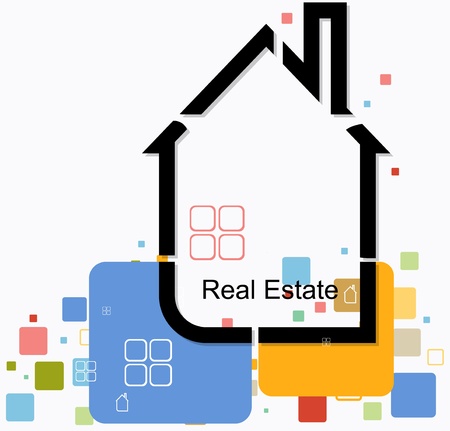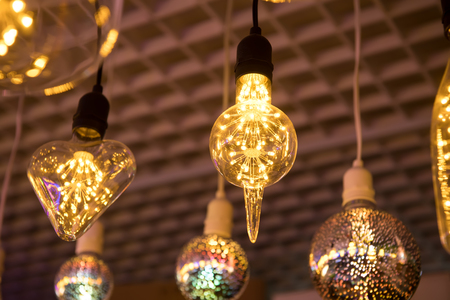Understanding Your Lighting Needs
When it comes to designing a smart lighting system for your home, the first step is to truly understand where lighting makes the biggest difference in your daily life. Assessing key areas—like the kitchen, living room, bedroom, and entryways—can help you prioritize where smart features will have the most impact. For example, a well-lit kitchen can make meal prep easier and safer, while adjustable lighting in the living room creates the perfect mood for movie nights or gatherings with friends. Think about how you use each space: Do you need bright task lighting in your home office? Or maybe softer, relaxing light for winding down in your bedroom? Consider your family’s routines, hobbies, and even your personal preferences—such as whether you like warm or cool tones. By taking stock of both practical needs and lifestyle habits, you’ll be better equipped to choose a smart lighting setup that not only adds convenience but also enhances the overall feel of your home.
2. Setting a Realistic Budget
Before diving into the world of smart lighting, it’s important to set a budget that matches your goals and lifestyle. Smart lighting systems can range from simple DIY setups to full-scale, professionally installed solutions. Breaking down the costs will help you make informed decisions and avoid surprises down the road.
Understanding the Main Cost Components
There are three key areas to consider when planning your smart lighting budget: devices, installation, and ongoing expenses. Here’s a quick breakdown to help you get started:
| Cost Category | Typical Range (per home) | What’s Included? |
|---|---|---|
| Devices | $100 – $1,000+ | Smart bulbs, switches, hubs, sensors, voice assistants |
| Installation | $0 – $500+ | DIY setup or professional electrician services |
| Ongoing Expenses | $0 – $120/year | Mobile app subscriptions, cloud storage, electricity usage |
Devices: Entry-Level to Premium Options
If you’re on a tight budget, start with just a few smart bulbs or plugs in key areas like the living room or kitchen. As your needs grow, you can expand with sensors or integrate with other smart home platforms. Higher-end systems may include color-changing bulbs, motion sensors, and advanced automation features.
Installation: DIY vs. Professional Help
Many Americans find that installing basic smart lighting is straightforward with user-friendly apps and plug-and-play devices. However, if your system requires hardwiring or integration with existing electrical infrastructure, hiring a licensed electrician ensures safety and code compliance—especially in older homes.
Ongoing Expenses: What to Expect
While most smart lighting platforms offer free basic controls, some advanced features—like remote access or custom scenes—may require a monthly subscription. Additionally, keep in mind the slight increase in electricity costs due to always-on connectivity.
Budgeting for Your Situation
The best approach is to prioritize must-have features for your household and plan upgrades over time. By mapping out these potential expenses up front, you’ll enjoy the benefits of smart lighting without stretching your finances too thin.

3. Choosing the Right Technology
When designing a smart lighting system for your home, selecting the right technology is key to achieving both impact and convenience. The American market offers a wide array of smart lighting products and platforms, so it’s important to know what works best for your needs and budget. Popular brands like Philips Hue, LIFX, and TP-Link Kasa are well-known for their reliability and ease of use. These products offer features such as adjustable brightness, color-changing capabilities, and energy-saving modes, which can be controlled through dedicated mobile apps or voice assistants.
Compatibility is another crucial factor to consider. Many US households already use smart home ecosystems like Amazon Alexa, Google Home, or Apple HomeKit. Before making any purchases, check if your chosen lighting system can seamlessly integrate with your existing setup. For instance, Philips Hue lights are compatible with all three major platforms, allowing you to control your lights using simple voice commands or automations set up within your preferred ecosystem. LIFX bulbs also work well with Alexa and Google Home and offer impressive color range and scheduling features.
Don’t forget about connectivity options—some bulbs connect via Wi-Fi, while others require a hub or bridge to communicate with your network. Hub-based systems can handle more devices and often offer more reliable performance for larger homes. On the other hand, Wi-Fi enabled bulbs are easier to install and ideal for smaller spaces or renters who want minimal setup hassle. By carefully evaluating these factors—product reputation, compatibility with your current smart home platform, and connection type—you’ll lay a solid foundation for a smart lighting system that enhances both the functionality and atmosphere of your living space.
4. Planning the Installation Process
Before you dive into setting up your smart lighting system, it’s important to plan out the installation process for a hassle-free experience. One of the first decisions you’ll face is whether to tackle the installation yourself or hire a professional. Both options have their advantages and drawbacks, so let’s break down the key considerations.
DIY vs. Professional Installation
| Aspect | DIY Installation | Professional Installation |
|---|---|---|
| Cost | Lower upfront costs; only pay for materials | Higher upfront costs; includes labor fees |
| Skill Level | Requires basic electrical and tech knowledge | No technical skills required from homeowner |
| Time Commitment | Takes more personal time to research and set up | Faster setup by experienced technicians |
| Customization | Full control over placement and settings | Guidance on optimal layout and integration |
Essential Steps for a Smooth Setup
- Assess Your Home Network: Make sure your Wi-Fi coverage is strong throughout your house, especially in areas where you plan to install smart lights.
- Create a Layout Plan: Map out which rooms or zones need smart lighting, considering convenience and daily routines. This helps avoid over-purchasing or missing important spots.
- Select Compatible Devices: Choose bulbs, switches, and hubs that work seamlessly with your chosen ecosystem (Amazon Alexa, Google Home, Apple HomeKit, etc.). Double-check compatibility to prevent headaches later.
- Prepare Existing Fixtures: Identify which fixtures will be upgraded. If you’re unsure about wiring or safety, this may be a good point to consult a pro.
- Install Devices: Follow step-by-step manufacturer instructions for each device. For DIYers, take your time and don’t rush connections or setup steps.
- Integrate with Your Network: Use your smart home app to add each device to your network, grouping lights as needed (by room or activity).
Troubleshooting Tips
- If you encounter connectivity issues, try moving your router closer or adding a mesh Wi-Fi extender.
- Label each light in your app for easy identification—no more guessing which “Living Room Light” is which!
A successful installation starts with careful planning—whether you go DIY or opt for professional help. Taking these steps will help ensure your new smart lighting system delivers both impressive impact and everyday convenience.
5. Maximizing Everyday Convenience
One of the biggest perks of designing a smart lighting system is how it can make daily life easier and more enjoyable. With features like scheduling, automation, and app control, you get to tailor your home’s lighting to fit your lifestyle—without needing a tech degree or a big budget.
Practical Scheduling for Busy Lives
Let’s face it—life gets hectic. Smart lighting lets you set up schedules so your lights turn on before you get home from work or dim automatically when its time for bed. For example, many families program the porch light to switch on at sunset, adding security and peace of mind. Morning routines can become less stressful too; imagine your kitchen lights gradually brightening to help everyone wake up gently.
Automations That Work for You
Smart automation takes things further by connecting your lights to triggers like motion sensors or even voice assistants. If your hands are full with groceries, a sensor can turn on the hallway light as you walk in—no fumbling for switches needed. For parents, automating nightlights in kids’ rooms can help little ones feel safe if they wake up during the night. These simple automations mean less hassle and more comfort for every family member.
Personalized App Control
With app control, you’re never far from managing your home’s ambiance. Whether you’re out running errands or relaxing in your backyard, you can adjust lighting from your smartphone. Hosting friends for movie night? A couple of taps can dim living room lights and set the perfect mood. Many apps also let you create custom scenes—like “Dinner Time” or “Game Night”—so you get exactly the right brightness and color temperature with zero effort.
Real-World Impact
The beauty of these features is that they don’t just add convenience—they help save energy and reduce stress. Whether it’s ensuring lights aren’t left on all day or making sure every corner is well-lit when needed, smart lighting adapts to real life. This means more time enjoying your home and less time worrying about switches and bulbs.
Conclusion: Tailoring Light to Your Lifestyle
By embracing scheduling, automation, and easy app controls, smart lighting systems offer everyday solutions that go beyond aesthetics—they simplify routines and create spaces that truly work for you and your family.
6. Ensuring Long-Term Flexibility and Support
When designing a smart lighting system for maximum impact and convenience, it’s essential to think beyond your immediate needs. Scalability should be a key consideration from the start. Choose products and platforms that allow you to add more devices or expand into new areas of your home as your lifestyle changes. Whether you’re planning to remodel, move, or simply want to try out new features in the future, having a system that grows with you is a smart investment.
Plan for Future Upgrades
The world of smart home technology moves fast. To avoid feeling left behind, select lighting solutions that are known for regular software updates and strong manufacturer support. Look for brands that offer robust upgrade paths so you can take advantage of new integrations, voice control improvements, or energy-saving features as they become available. In the U.S., compatibility with popular platforms like Amazon Alexa, Google Home, and Apple HomeKit can keep your system relevant and easy to use for years to come.
Troubleshooting Resources Matter
No matter how reliable your setup is, occasional hiccups are inevitable. Make sure your chosen system provides accessible customer support—this could mean 24/7 chat help, comprehensive online FAQs, or active user communities where you can find quick answers. In the American market, responsive support and clear troubleshooting guides are valued because they save both time and money when issues arise.
Think Ahead: Reliability Meets Adaptability
A flexible smart lighting system isn’t just about adding new bulbs—it’s about ensuring continued convenience as your needs shift. By prioritizing scalability, future-proof upgrades, and quality support resources now, you’ll enjoy lasting peace of mind along with the modern comfort and style that smart lighting brings to your home.

